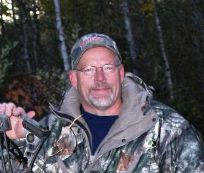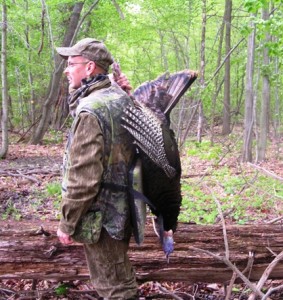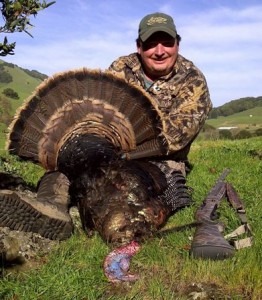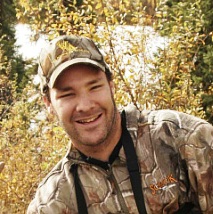Hunters Review Havalon Knives for Field Dressing
and Skinning Hogs
By Patrick Carrothers, President & CEO
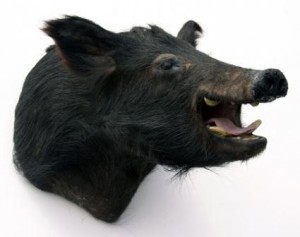 We’ve been hearing hunters praise our Havalon knives for field dressing hogs ever since we started selling them in the fall of 2005. This was a pleasant surprise. We knew we had the longest-lasting surgical edges in the business. We knew we created a great knife for field dressing and skinning deer and all the various small game animals and fur bearers. But we didn’t have any direct experience with hunting the tough, hairy hides of hogs, bears, and mountain goats. Our trapper customers told us our blades worked great on beaver; that was a good sign. But would our blade edges hold up well when cutting through the tough hairy hides that are well known knife killers?
We’ve been hearing hunters praise our Havalon knives for field dressing hogs ever since we started selling them in the fall of 2005. This was a pleasant surprise. We knew we had the longest-lasting surgical edges in the business. We knew we created a great knife for field dressing and skinning deer and all the various small game animals and fur bearers. But we didn’t have any direct experience with hunting the tough, hairy hides of hogs, bears, and mountain goats. Our trapper customers told us our blades worked great on beaver; that was a good sign. But would our blade edges hold up well when cutting through the tough hairy hides that are well known knife killers?
It didn’t take long before our phones started ringing. Hunters were calling to tell us how happy they were with their Piranta for skinning hogs. And bears, elk, moose, sheep, goats, you name it. We started getting feedback that we could only have dreamed about. You could hear the excitement in their voices. You could read it between the lines of their emails. And at every trade show more than a few guys would stop by and say “This is a great knife for skinning hogs!” But don’t take it from me. Here’s a few reviews from hunters in the field that may help if you’re looking for the best knife for field dressing and skinning hogs:
“How Many Times Have You Had to Change Knives in the Middle of a Job”
by Max Prasac

The author took this 175-lb sow with his custom .475 Linebaugh Ruger Super Redhawk in the sweltering summer heat of North Carolina.
Anyone who has skinned a wild hog knows there are few animals that will dull a knife as quickly and efficiently. Having said that, Brad, an experienced skinner, grabbed his knives (yes, plural), and I brought out my one knife, a Havalon Piranta-Edge. I have two no-name cheap skinning knives of unknown origin that I’ve used for a very long time that hold an edge reasonably well….on deer. Hogs are a different story. I decided to give my new Havalon a go and handed it to Brad. He looked at the bright orange handled knife with a bit of obvious skepticism, but made the decision to humor me.
How many times have you had to change knives in the middle of a hog skinning job, with yet another couple of sharpened knives on standby? If you only have one knife, maybe you have to stop and sharpen it before finishing the job. That has happened to me more times than I care to remember. It becomes particularly tedious when you kill multiple hogs and have them lined up for skinning.
The first couple of cuts proved effortless, and Brad paused to give me a look of surprise and then a grin formed on his face. He got to work, his pace increased as did the smile on his face. He accelerated as if to prove how fast he could skin a hog with the right tools. I usually help out to speed the process up, but soon found it wasn’t necessary. I would only get in the way, and impede progress. The Havalon Piranta proved to be the right tool for the job. The only “problem” we ran into is that we skinned out the hog expecting to change blades and never got to the point where it was necessary.
Max has written for Boar Hunter and Bear Hunting magazines, and is an occasional contributor to the National Rifle Association (NRA) publications, particularly American Hunter.
“I Skinned Four Hogs with the Havalon”
by Mike Weathers

Ask Mike Weathers for his favorite knife for field dressing and skinning a hog. (Not a trick question)
Last Saturday I went hog hunting with some buds and their dogs. We caught six hogs for a party they were planning that night. These were younger fellows and none of them had ever gutted a hog before.
Since I’m always hunting or fishing for something, I keep a spare skinner in the truck. One of the guys showed me this knife that looked like a scalpel, so wanting to show these guys the right way to process a wild hog, I took off. I was amazed at the sharp blade and how effortless it was to skin and clean the hog. It usually takes a few sharpenings on one of my best knives, but not so with the Havalon. I skinned four hogs before I let one of the rookies try what I had shown them. My hands didn’t cramp up, the light weight of the knife was incredible.
*Safety Note* watch the video on how to change the blade, even after skinning 6 hogs,one of the rookies almost cut his finger off trying to replace the blade (it didn’t need changing). Great Product, can’t wait to get mine and show all my hunting buddies!!!!!!!!!!!
Mike Weathers is a hunter and new Havalon customer living in Texas.
Ready to Get the Best Field Dressing and Skinning Knife for Hogs? Click here.
We want to hear your Havalon story! Leave a comment; share your experience with other hunters, or let us know if you had a problem. Thank you!
9,355 total views, 1 views today











